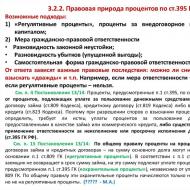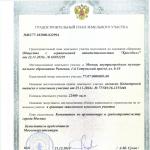
2 investment policy direct indirect portfolio investment. Direct and portfolio investments: what are the differences? Portfolio investment benefits
Evgeny Smirnov
Bsadsensedinamick
#
Investments

What are direct and portfolio investments?
A direct investor develops the chosen company, a portfolio investor buys shares of already successful companies.
Navigating the article
- Definition of direct and portfolio investments
- What are the similarities between straight and portfolio foreign investment
- How direct investment differs from portfolio investment
- Purpose of participation in investment: direct, portfolio and other investments
- Direct and indirect investments: essence, forms and principles
- Is direct investment different from venture capital?
It is well known that the classification of investments has a complex and branched structure. Profitable financial investments differ in many ways. This article will talk about the similarities and differences between direct and portfolio investments.
Definition of direct and portfolio investments
Direct investment is the financing of the creation (creation or reproduction) of fixed assets of a particular enterprise. A typical situation typical for this type of investment: the company needs money to buy equipment that can strategically solve the problem of increasing profitability. The management of the company applies to a person (natural or legal) with a proposal for financial participation. A business plan is demonstrated, which describes the benefits of the investor from the investment with a detailed schedule for the development of the requested funds. The conditions of control and cooperation are discussed.
Portfolio investment is a cash injection into the turnover of an enterprise in order to increase its financial assets. About achieving control economic activity in in this case we are not talking. The investor is interested in the rate of return, that is, the rate of return attributable to the invested monetary unit or one share.

The similarity is manifested primarily in the goal of each investment - the most efficient use of available funds. Everyone obeys this rule profitable investments, both domestic and foreign.
Overseas portfolio investment demonstrates general confidence in the recipient country. Since relatively small shares of a block of shares do not provide an opportunity to interfere in the management of the enterprise, the financier, purchasing them, hopes for the stability and reliability of his investment. In general, the inflow of capital is beneficial for the national economy and confirms a good investment climate.
The same considerations are true for direct investment. A foreigner buying shares in an enterprise needs to experience the minimum acceptable degree of confidence that his funds are protected by the state and that the legislation is stable. Otherwise, the acquisition may result in losses, even if the investor is actively involved in the management of the property and has the necessary skills for this.
In some cases, the similarity criterion may be the method of purchasing assets (production or financial). This can be done directly with the issuer valuable papers or indirectly on stock exchange or the secondary market from a third party. In this case, it is not the place in which the sale of shares was carried out that matters, but the purpose of this operation. If the financier wants to obtain the right of management control, he buys up the enterprise "in parts" from different holders.
The portfolio investor is generally indifferent to who to buy shares from - he is only interested in their economic performance.
Commonality is also observed in the nature of a specific commodity, which is securities. Whether they are part of a portfolio or part of a direct investment, they can be speculated or sold under certain circumstances.
How direct investment differs from portfolio investment
First of all, direct investments differ from the portfolio nature of the assets on the development of which they are spent. The shares included in the portfolios are purchased for funds that the recipient disposes of at his own discretion as a financial instrument. Direct investment assumes strictly intended use (purchase of fixed assets, their renewal, modernization, construction, etc.).
Another difference is the amount. The content of the portfolio is formed by several types and types of securities. Such a structure is advisable to ensure diversification, but completely unsuitable for a takeover (takeover) strategy. In other words, not only a controlling stake, but also a tenth share total capital It is difficult to concentrate a separate enterprise in one portfolio.
The third significant difference is in the timing of the investment. Stocks in the portfolio can be for quite a long time, but they can be sold at any time if they no longer provide financial returns. There are other considerations for selling, in particular, speculative ones.

Direct investment is calculated as a long-term investment (at least five years). The reason for such a long cycle lies in the very nature of the operation. Such an investment is by definition aimed at developing production capacity and subsequent payback. It makes little sense to get rid of securities before reaching the point "zero" (the beginning of making a profit).
In Russia, the differences between portfolio and direct investment are clearly demonstrated by the prevalence of the latter. In the conditions of the domestic economy, the attitude towards impersonal securities is wary, especially against the background of the low development of the stock market.
In the United States, a significant portion of the population is involved in exchange transactions. Ordinary citizens buy shares, form their own portfolios (on their own or using the services of financial advisors), that is, they act as investors. Russians don't trust securities. And the enterprises themselves (especially successful ones) prefer to find other sources of outside capital for fear of the consequences of an uncontrolled issue of shares.
Direct investments are still practiced in the Russian Federation, when the financier knows who will go cash flow and what it will be spent on. It is likely that this proportion will change over time, and Russians, like Americans, will invest their savings in the development of the domestic economy.
Purpose of participation in investment: direct, portfolio and other investments
It is obvious that the motivations of direct and portfolio investors are different. It is easier to understand the incentive reasons if you take into account the classification of financial investments.
Real investments are called if they are aimed at the development of specific assets, that is, fixed assets. They are expressed capital investments... Naturally, most of them are straight.
Financial investments consist of investments in income generating instruments. By implementing them, the investor does not go into the intricacies of the economic mechanism of the issuing enterprise. He will be pleased if he receives an acceptable amount of dividends for the ruble invested in a certain company. This is exactly the situation described by the American writer Theodore Dreiser: small stock exchange dealers watched from which foot the financial tycoon would step on the asphalt when leaving the car. If it is on the left, then today he is “short”, that is, he is selling. Such was their omen. Investors-financiers do not think about how the invested enterprises work.
It can be concluded that the direct investor strives for income by developing a specific enterprise and increasing its value. Ideally, he absorbs a growing firm and receives the lion's share of its profits. His portfolio colleague goes to the same goal in a different way - he buys the most profitable or promising securities.
The length of the investment cycle also serves as a classification criterion. Investments of two years or less are considered short-term. The average term is from two to three. All other investments are long term. The cycle time demonstrates the investor's intentions - to make money quickly or to develop the object for a long time.
According to the form of ownership, investments are divided into:
- private;
- state;
- internal;
- foreign;
- joint.
Each of the subjects pursues its own goals.
The state, allocating funding for a project, takes into account its social or other importance (for example, general economic or even defense).

The task of a private investor is profit, but here, too, everything is not simple. Sometimes an individual business entity seeks to establish a monopoly position or control entire sectors of the national economy. In some cases, investments are subject to legislative restrictions related to the fight against monopolies and state economic security.
Foreign investors who export capital from their country pursue a variety of goals. Some are looking for the most favorable conditions for business (cheap labor, energy, raw materials, close sales markets, etc.). Others want to diversify revenue across currencies. Still others “denote presence” in regional markets, demonstrating a brand with an eye for the future. The forms of such expansion are mutually beneficial joint ventures, branches, foreign representative offices and subsidiaries.
With the sectoral feature, everything is clear: investments can be directed to individual target sectors of the economy ( agriculture, light, heavy or other industry, IT-technologies, trade, etc.).
The investor's interest in a certain sectoral specialization indicates the potential of the industry, in other words, about its underdevelopment.
Another criterion for the classification of financial investments is the degree of riskiness. An aggressive portfolio indicates an investor's desire for a high rate of return at the expense of safety. Conservatism manifests itself in the prevalence of reliable securities, but possible lost profits are sacrificed. Liquidity requirements for shares are dictated by the need for quick fundraising.
Summarizing the above investment directions, we can come to the conclusion that the main purpose of portfolio investments is to generate speculative income. Direct investments are aimed at developing the real sector of the economy.
Direct and indirect investments: essence, forms and principles
Indirect financial investments are called direct or portfolio investments in the form of securities purchased from intermediaries.
The role of the "transmission link" is specialized funds, Mutual funds, brokerage and insurance structures, banks and financial and consulting organizations.
These intermediary enterprises acquire stakes in different firms and then sell them to interested parties. Securities are included in ready-made optimized portfolios tailored to individual requirements.
Indirect investment is also called indirect or indirect. Their share should not exceed a tenth of the firm's capital. Otherwise, such a block of shares can be used to gain control over the enterprise, which is typical for a direct investment.
It is very important for every investor, especially for a beginner, to learn to understand various investment instruments and strategies. And in order to subsequently reduce all possible risks, it is necessary to learn how to diversify them. The ideal way to reduce the likelihood of collapse is precisely the formation of portfolio investments.
So, speaking in an accessible language. Portfolio investment is a certain form of investment in various types of securities with the aim of making a profit by increasing their value. That is, the profitability that is obtained through portfolio investments can be obtained in the event of a guaranteed increase in the value of purchased securities, as well as by receiving certain dividends. Well, in order to minimize the possible losses of his investment portfolio, the investor distributes his capital into several different types of securities from different companies.
It is clear that the structure of portfolio investments may differ depending on what type of investment was chosen, from total timeframes capital investments, on the degree of profitability and on their riskiness. Portfolio investments are suitable for those investors who have free capital and want to invest it profitably for subsequent profit.
Portfolio investments have the main principles of successful implementation:
- diversification - you need to invest your capital in several types of securities in order to reduce possible risks and increase the portfolio profitability;
- liquidity - most often investors need to invest in highly liquid assets, while sacrificing high profitability. This measure is due to the fact that very often you have to quickly make decisions based on current market trends;
- conservatism - when the depositor has responsibly approached the formation of his own investment portfolio, its risks will relate not to the loss of fixed capital, but to the receipt of a relatively low income.
Like any other type of investment, portfolio investments also carry certain risks. Main types of portfolio investment risks:
1. An illiterate choice of securities in the formation of an investment portfolio, which leads to capital losses - an ineffective portfolio.
2. Purchase or sale of shares at the wrong time, which may lead to losses.
3. At the time when the issuing company undergoes re-registration or obtains a license, additional direct costs appear that will affect not only the issuer itself, but also the depositor.
4. Liquid risk, which is associated with the likelihood of losses as a result of the sale of assets.
5. Risks of portfolio investments that are associated with inflation rates. That is, a very high inflation rate can negatively affect the stock market.
6. Risk of abrupt change interest rates on the market can also negatively affect the value of securities in the investor's portfolio.
7. There are other types of risks that can negatively affect the profitability of a portfolio inverter.
Direct and portfolio investments: main features
Any investment has one goal - to obtain a return on investment, and they are usually divided into direct and portfolio investments. Such investment in most cases is made by management companies with a fairly large experience in the field of securities. Moreover, large companies have specially created divisions for this. Their goal is to find profitable direct and portfolio investment options.
If portfolio investment is monetary investments into liquid securities for subsequent extraction of income, then direct investments differ in that, that money is invested in the authorized capital and assets of the company itself... In most cases, direct investment involves the acquisition of a majority of the company's shares (controlling stake), which enables the investor to directly participate in the management of the enterprise.
Direct investments are mainly carried out in the long term, while the investor himself has a direct interest in the further development and prosperity of the company. And in order to accumulate all investment funds, special funds are being created locally. Moreover, direct investments are used by large enough enterprises to open their branches abroad. Such direct investments become strategic because they can lead to an increase in the company's production and expansion of its spheres of influence in foreign markets.

Thus, the main distinguishing feature of direct investments from portfolio investments is the fact that direct investments give the investor the right to receive a certain part of the income, while portfolio investments give the right only to receive established dividends. Moreover, with direct investment, the company can always count on various support from the investor himself. But with portfolio investment, the investor does not receive any right to participate in the management of the firm's affairs.
Next: The OTC market is.
There would be money there would be a real portfolio. No attendants - only real me, no portfolio ...
Real investments must be - this must be remembered! Then, the portfolio of real investments, in contrast to the portfolio of securities, has a higher% return - this also needs to be known and remembered! Investments should only be real. Your portfolio is a real portfolio! Good luck!
The portfolio is good and profitable. It is better to hedge as much as possible and not to collect one portfolio, but from 3 or more.
For the most part, this is what investors do. Everyone knows each other and works together. Few people decide to collect their investment portfolio without being based on close acquaintance.
It seems to me that in order to collect a good investment portfolio, you need to know those owners of companies and enterprises from which you buy shares. Otherwise, the portfolio will be like a one-armed bandit - lucky / unlucky.
A good investment portfolio is your knowledge + funds + necessary tools + activity and desire to receive a dividend. The rest will follow ...
A good portfolio should consist of at least three assets, these are securities, real estate and gold. Then the portfolio needs to be rebalanced. In short, investing in a portfolio is a bunch of nuances and measures that you need to know about BEFORE you start investing!
Direct and portfolio investments.
The main forms of international capital migration are the import and export of entrepreneurial and loan capital.
Capital export is the export of value with the aim of increasing it abroad. In the 1960s - 1990s. the export of capital grew faster than production and foreign trade, and was the most powerful factor of internationalization in the world economy. Distinguish between the export of business and loan capital.
The export of entrepreneurial capital is a long-term foreign investment leading to the creation of branches abroad, subsidiaries (firms) and mixed (joint) ventures.
In the world capital market, the largest share is occupied by highly developed countries, and above all by their large companies, which carry out a significant part of their production and financial activities outside the home country (and these are almost all large companies in highly developed countries) - the so-called transnational corporations (TNCs).
Compared to the first half of the 20th century, when capital was invested mainly in the extractive industries of colonies and dependent countries, in the era of scientific and technological revolution, about 75% of foreign direct investment falls on investments of developed countries in each other's economies, and the overwhelming part in manufacturing.
Most of TNK's overseas production is usually destined for sale in local markets. This kind of "substitution" for the export of goods and services makes it possible to overcome protectionist barriers and protect oneself from the influence of fluctuations in foreign exchange resources.
The movement of loan capital in the field of foreign economic relations acts in the form of international credit. In the narrow sense of the word international credit - a loan in cash or credit provided by a lender of one country to a borrower from another country on the terms of urgency, repayment and interest.
Under foreign investment understand capital investment by foreign investors, other states, foreign banks or companies. There is an international movement of factors of production in the form of foreign investment to create final products abroad. Foreign investments are carried out with the aim of owning property abroad in order to obtain a higher profit than at home. Through the export of capital, close economic ties are formed between countries.
The main reason for attracting investments from abroad is the need for capital and the expansion of the domestic market. When used rationally, they turn into a powerful source of renewal of the production apparatus and economic growth. Investments do not create external debt, but they contribute to an increase in the number of jobs, the inflow of new technologies into the country and the modernization of national production, and accelerate the process of establishing effective foreign economic relations. An investing company can provide technology, skills, and markets in exchange for an equity stake in an overseas company. International movement of capital leads to an increase in total world production through more efficient redistribution and use of factors of production. In the capital exporting country, the average profit increases, but the demand for labor decreases and the income of labor owners decreases. It is important to note that negative consequences are not excluded for the capital importing country. With uncontrolled attraction of investments, they can lead to a sharp deterioration in the ecological state of a certain territory (the desire of industrial countries to transfer harmful production abroad), to put whole industries under control.
TO direct investment usually include enterprises created or acquired abroad and controlled by a foreign investing company, ᴛ.ᴇ. full control over it is assumed. Private equity investments include overseas equity investments by private companies, reinvested profits, and intercompany capital transfers in the form of loans and borrowings.
Portfolio investments (port-folio investments) - capital investments in foreign securities that do not give the investor the right to real control over the investment object. Such investments are predominantly based on private entrepreneurial capital, although governments often purchase foreign securities.
For centuries, trading in securities was almost exclusively an intra-economic phenomenon - the issuer of the security and the investor were located in the same country. Securities were issued by governments, private enterprises, and subscribed by private individuals. They were given as a dowry, left as an inheritance, presented, sold. But the focus for foreign investors they have become relatively recent.
Portfolio of securitiesis a set of securities different types and in varying quantities, providing the investor's satisfactory quality characteristics of this kit. The list and volume of securities included in the portfolio is called the structure of the portfolio. The criteria for the quality of securities are their yield, liquidity, reliability and level of risk. The yield is the ratio of the size of the dividend paid to the value of the security. Expressed as a percentage. Liquidity - the ability to quickly circulate a security in cash no loss to the owner. Reliability means the ability of securities to maintain their market value when the situation on the loan capital market changes. Risk is a quantified amount (level of risk) of potential financial losses. Investment risk is a quantitatively determined possibility that the return on investment will be less than the investor's pre-calculated one.
Reasons for Overseas Portfolio Investment... In general, they are close to the reasons for foreign direct investment, with the amendment that as a result of portfolio investments, the investor does not acquire the right to control the enterprise, capital is invested in ĸᴏᴛᴏᴩᴏᴇ. At the same time, at the same time, the liquidity of portfolio investments, that is, the ability to quickly convert securities into cash currency, significantly higher than that of direct investment. main reason portfolio investments - the desire to place capital in the country and in such securities in which it will bring the maximum profit with an acceptable level of risk. In a sense, portfolio investments are viewed as a means of protecting money from inflation and generating speculative income. At the same time, neither the industries nor the types of securities in which investments are made are of particular importance if they provide the desired income due to the growth of the market value and the dividends paid.
Cross-border flows of portfolio investments are explained by the ability to diversify risk. Usually, the higher the profitability of certain securities, the higher the risk associated with their purchase. It is important to note that international investment is used to reduce the risk level of portfolio investments. More than 90% of portfolio foreign investment are implemented between developed countries and are growing at a rate significantly outstripping direct investment.
Direct and portfolio investments. - concept and types. Classification and features of the category "Direct and portfolio investments." 2017, 2018.
We often hear the word "investment" in the news, we read it in newspapers and magazines. But an ordinary personwho does not understand the topic of finance, it is not clear what this concept means, all the more difficult for him to guess about the classifications of the investment process. In this article, we will define in detail what investments or investments are, what their types are, and also dwell on the concept of "portfolio investments".
Investment - definition of the concept
As we know, nothing happens just like that, especially the investment of money. Any investor expects such an action to exaggerate his income. With the help of investments, you can make a profit, increasing the value of your own securities, as well as upon receipt of dividends. Thus, investments are correct and calculated investments of a certain capital with the aim of making a profit.
Attachment types
There are two types of investments.
- Real - investments in material and non-material resources. These specialized concepts mean tangible assets, intellectual property, inventions, scientific and technical elements and other capital.
- Financial - investments in securities, various assets, bank deposits and others.
There are differences in such investments by purpose.
- Direct - together with financial investments, a person gets the right to manage the business in which he made an investment. As you know, each enterprise has its own authorized capital, with this type of investment the investor receives at least 10% of this capital. Along with this, a person who has made investments in any enterprise gets the opportunity to manage a controlling stake.
- Portfolio investments represent the indirect participation of the depositor in the process of earning money.
What is portfolio investment?
Portfolio investments are investments that are created to obtain financial benefits through the payment of dividends and interest. But the investor does not manage the enterprise or organization in which the funds were invested.
The difference between direct investment and portfolio

Direct and portfolio investments differ in volume. At any moment, portfolio investments can change to another type, this happens if there is a drop in market liquidity. And if the liquidity is on good level, then, despite the negative trend, the investor can sell his investment at a favorable price.
What types of portfolio investments are there?
Direct and portfolio investments have their own varieties. The latter can be classified by different criteria their formation and demand in the securities market. It all depends on the criteria by which the investments are distributed.
Portfolio investment types are classified according to the degree of profitability and risk as follows:
- Investments that have the highest return, but at the same time there is a very high risk in the efficiency of the use of funds.
- Investments that generate a constant and stable profit of a small amount. They are mostly made up of stocks of reliable companies and have little risk of exposure.
- Investments that consist of stocks of different profitability and degree of risk occurrence.

Portfolio investments can be classified according to the timing:
- Short term - can last from several hours to six months.
- Medium-term - the term of their investment from 6 months to one year.
- Long-term - from 1 year or more.
Making such investments within the country
Inside the country, there is deep control over various investments. The current legislation applies to both direct and portfolio investments. Especially such increased attention from the state is observed during the crisis, which, in turn, negatively affects the receipt of profit.
Impact on the investment process government agencies includes the following items:

- Regulation of all conditions that are directly related to investment activities. All income and expenses are reflected in the documents, in most cases additional taxes are included. But there are also opportunities to protect investors at the legislative level, which stimulate and create favorable conditions for the development of the economy.
- Direct participation of the state in investment activities, that is, the state continuously participates in the formation of the capital of the enterprise.
Foreign investment of this type of investment
Portfolio investments made by foreign citizens or enterprises are investments of a certain capital of investors in more profitable companies and holdings. The foreign investor himself does not take part in the life of the project, but only watches it with the intention of obtaining high profits and reducing risk indicators.

Portfolio foreign investments include: bonds, transferable bank receipts, shares, certificates of deposit, IOUs, bonds.
Portfolio foreign investments, in turn, are divided into the following types:
- Debt securities with value - they are given to investors by the managers and directors of the project, in which the latter undertake to pay dividends and interest at the end certain work and making a profit from the project;
- Equity securities with value are documents that confirm the guarantee that the investor has contributed capital and funds will be paid at the end of the term.
How are they done?
Portfolio investments are made to a greater extent with foreign countries, the development of which is at a fairly high level. Per last years there is a net outflow of investments from developing countries. This indicator does not reflect well on the domestic economy of a particular country. Despite such problems, international organizations continue to buy securities from other countries.

Portfolio foreign investment is an investment of capital in securities of production located outside a particular country. In this case, the investor cannot control the investment object.
Portfolio investments are carried out in the form of dealing with securities, which should bring sufficient profit to its depositor, as well as the success of a developing project.
What are the nuances that hinder portfolio investment?
Like any other business, a business cannot exist without the support of partners and investors. To make portfolio investments, investments are required, and rather big ones. And attracting oligarchs who could become investors is not very easy. It takes a lot of time to find these very people who would agree to invest their capital in the development of the project.
The next difficulty in making portfolio investments is to retain existing depositors, along with attracting new ones. To do this, you need to prove that your project will bring good profit in any case, and also minimize the risk of loss. financial resources... A firm that has been on the market for at least five years is considered ideal for an investor.
To interest an investor, you need to do a titanic work - to learn the psychology of investors, analyze your weaknesses and find an explanation for them with motivation to improve the situation, and also adhere to the following points in negotiations:
- It is necessary to tell about investors who have already invested their capital and continue to participate in life cycle project. This should be done on the basis of concrete positive facts of cooperation. If there are few of them, you need to clearly formulate the perspective of joint work.
- Show that the firm's stock does not lend itself to the risks that could arise in the event of a crisis. To do this, it is necessary to work out several areas of business, ranging from fluctuations in the exchange rate, ending with market relations.
- Convince the investor of the advisability of investing in the project. Here it is important to draw up points of positive points that will arise when working with your company in advance. Based on the psychological characteristics of the negotiators, you need to present these moments so that future partners do not have any doubts about concluding financial agreements with you.
Portfolio investors - who are they?

These are people who donate their capital to the development of the project. They are interested in maximizing profits from securities, and not in the very control of the firm, as previously discussed.
Portfolio investors include pension funds, insurance companies, investment funds and, in some cases, just individuals. But not all individuals use this type of investment. After all, each owner does not want to give some capital to other people without his own control over the project implementation process. Therefore, in most cases, portfolio investors are organizations.
Positive aspects of such investments
Portfolio investment is an investment of capital in a certain project, which in the future involves making a profit. In turn, investors should focus not only on profit, as there is still a lot of work to be done before making a profit. And the positive aspects for investments should be:
- Small risks for investment, which are directly provided by the diversification of assets. Assets must be at a sufficient level and appropriate to the design conditions.
- Management of funds for the highest level... With sufficient qualifications of the workers, the project will certainly be successful, since they can initially analyze and see the outcome of the results obtained in any situation. Therefore, it is important to attract highly qualified specialists in a specific field of knowledge to implement the conceived ideas.
- Lack of tax costs, since the profit received can be kept in the accounts investment fund, as well as pour it into subsequent projects or other profitable organizations.
The concept of portfolio investment is widely used in the modern world. The essence of this concept lies in investing money in a profitable business, as a result of which the investor makes a profit. Portfolio investment has a number of positive aspects that directly affect the attraction of new investors. Recently, we have seen a trend towards direct investment, since a person who invests money wants to personally control the implementation of a specific project. At the same time, he selects personnel, their training (if necessary), and orders the financial remuneration of employees.
| Direct investments | Portfolio investments |
| Direct investment involves the direct, direct participation of the investor in investing capital in a specific investment object, be it an acquisition real assets, or investing in the authorized capital of the organization. The objects of direct investment are, as a rule, equipment, buildings, know-how. | Indirect (indirect) investments involve the investor's capital investment in investment objects through financial intermediaries (institutional investors) through the acquisition of various financial instruments. The objects of portfolio investment, as a rule, are various securities, banking deposits, foreign currency. |
| Direct investors are companies and entrepreneurs who invest in the purchase of equipment, buildings, know-how in order to organize production and profit from just such direct investments. Although in joint stock companies there is no such division into portfolio and direct investors. There are minority shareholders, majority shareholders. Large, medium, small. | A portfolio investor is a person or institution that acquires financial instrument for your investment portfolio, that is, a certain set of investment instruments. The formation of a portfolio is associated with the tasks of risk diversification for various financial assets. Therefore, an investor purchasing a small block of shares or securities of an enterprise is not a direct one, that is, a strategic investor, but is a portfolio one. |
| Direct investments can be carried out at the expense of financial (portfolio) | Portfolio - cannot |
| Across secondary market securities cannot be carried out | They can be carried out through the secondary securities market, but they cannot turn into direct ones, since they go only to the owners of shares, and not to the enterprise. Yes, but not directly related in any way |
| When forming Authorized capital there is a relationship between direct and portfolio. Portfolios eventually turn into straight lines. Often, real investments cannot be made without issuing shares, that is, without financial investments. Financial investment is an essential part of planning direct, real investment. |
From the above, we can conclude that financial investments are a connecting link on the path of converting savings into real investments and serve as one of the most important channels through which savings enter production, and at the same time they can act as a relatively independent form of investment.
54. The role of scientific and technological progress in the development of the world economy.
Scientific and technological progress is a continuous process of discovering new knowledge and applying it in social production, which makes it possible to combine existing resources in a new way in order to increase the output of high-quality final products at the lowest cost. In a broad sense, scientific and technical progress is understood as the creation and implementation of new equipment, technologies and materials, as well as the use of progressive methods of organizing and managing production.
There are two main forms of STP:
1. Evolutionary, involving the gradual improvement of technology and technology; economic growth is ensured through quantitative indicators;
2. Revolutionary (scientific and technical - ntr), manifested in the qualitative renewal of equipment and technologies, a sharp increase in labor productivity; economic growth is ensured through qualitative changes.
As evidenced by the practice of developing scientific and technical potential, sources of financing for R&D play an important role: where the share of private investment is on average 60% or more, there is a positive growth trend in investment in R&D and their high efficiency. This trend is typical for almost all OECD member countries: the growth of private investment against the background of a decrease in the share of investment from the state budget. Thus, in the United States, private investments account for more than 60%, budgetary investments - on average 20-25%, the rest for charitable foundations and grants. According to experts, the effectiveness of the US innovation system is due to clearly formulated tasks on a national scale, a high degree of intellectual property protection within the framework of state innovation policy (stimulating active patenting), a large share (~ 50%) of venture capital in the total amount of R&D funding, and close links between TNCs and universities. The American model in the field of R&D practically applies to all OECD countries, where, in addition to the United States, the leading EU countries occupy a stable position (Table 23).
However, at the turn of the XX / XXI centuries. and in the development of the 2000s. the share of the group of developing countries is noticeably increasing, especially in the Asia-Pacific region. Here the leading role belongs to the PRC. The share of R&D expenditures in China's GDP is constantly growing: the period from 1996 to 2009. costs increased 3 times from 0.6% to 1.7%, respectively. A shift towards higher R&D spending in China, along with public policy, due to the investments of TNCs in their foreign branches, which is explained by the increase in the professional level of scientific personnel in China and their relatively low cost in comparison with developed countries.
As for Russia, here the scientific and technical sphere is noticeably inferior to developed countries in terms of the scale and intensity of innovation. In terms of world expenditures on science, Russia accounts for just over 1%, although research organizations employ more than 6% of scientific workers around the world. Funding for scientific research is carried out mainly by the state (over 60%), while the share of the domestic business sector does not exceed 15%. Russia spends on science 8 - 9 times less than Japan, Germany - 4 times, in the USA - more than 20 times. A decrease in internal expenditures on science is accompanied by a decrease in the number of scientific organizations (primarily in the industry) and the number of employees employed in them.
















